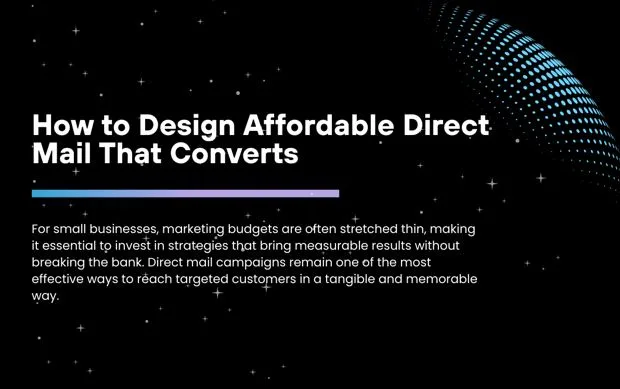The Role of Equipment Financing in Reducing Tax Burden for Growing Companies
For many businesses, growth often comes with the paradox of increased opportunity and higher costs. Expanding into new markets, upgrading technology, or improving production capacity requires significant investment. At the same time, growth usually pushes companies into higher tax brackets, exposing them to larger liabilities. While many entrepreneurs focus on revenue generation and expense management, there is another lever often overlooked — how financing strategies can directly impact the company’s tax position. One of the most effective tools in this regard is equipment financing, which not only gives companies access to critical machinery and technology but also plays a substantial role in reducing taxable income.
To understand the connection, it is important to view equipment not merely as an operational necessity but as a financial asset with tax implications. Purchasing equipment outright requires large amounts of capital upfront, which can strain cash flow and limit flexibility. By contrast, financing spreads the cost over time while unlocking deductions that reduce tax liability. This dual benefit allows companies to invest in growth while simultaneously strengthening their financial efficiency.
One of the clearest advantages of financing is the ability to leverage Section 179 deductions in the U.S. tax code. This provision allows businesses to deduct the full purchase price of qualifying equipment in the year it is financed or purchased, rather than depreciating the asset over several years. For a growing company, this creates an immediate reduction in taxable income, often freeing up thousands of dollars in potential tax savings. Startups rarely have the capital to maximize these deductions, but growth-stage companies that strategically finance their purchases can take advantage of the tax structure in ways that magnify their cash position.
This is where equipment financing becomes a strategic decision rather than just a practical one. By structuring deals correctly, companies can reduce taxable income in the same year they secure the asset, all while preserving their working capital. Instead of sinking cash reserves into equipment, they can allocate liquidity toward payroll, marketing campaigns, research and development, or expansion efforts. In highly competitive markets, the ability to reinvest quickly without being slowed down by tax obligations creates a critical edge.
The tax advantages of financing extend beyond Section 179. Interest paid on financing is often deductible as a business expense, further lowering the tax burden. While some executives shy away from borrowing due to concerns about interest rates, it is important to remember that much of that cost may be offset by the tax benefit. In practical terms, the real cost of financing is often lower than it appears once deductions are factored in. Companies that recognize this dynamic can pursue aggressive growth strategies while maintaining financial efficiency.
Leasing options under equipment financing also play a role in reducing taxes. Operating leases, for example, are typically considered an expense rather than an owned asset. This means that the full lease payment may be deductible, simplifying accounting while reducing taxable income. For companies navigating uncertain markets or industries where technology becomes obsolete quickly, leasing provides flexibility while ensuring the business can continue claiming tax benefits year after year.
Another overlooked benefit is how financing impacts the balance sheet. When equipment is financed instead of purchased outright, businesses often maintain stronger liquidity ratios. This matters not just for internal stability but also for external stakeholders such as investors, lenders, and even tax auditors. A company with a healthy balance sheet can secure better terms for future financing, reduce risk perceptions, and ensure compliance without overextending itself. By aligning financing structures with tax strategies, businesses set themselves up for sustained growth rather than short-term relief.
The connection between financing and taxes is particularly important in industries with high capital expenditure needs. Construction, manufacturing, healthcare, and logistics are sectors where expensive equipment is non-negotiable. In these fields, the difference between purchasing outright and financing can mean the difference between carrying a heavy tax burden and strategically reducing it to reinvest in the company. Firms that routinely upgrade their fleets, machinery, or specialized tools can use financing as an ongoing tax management strategy rather than a one-off tactic.
It is also worth considering how financing helps hedge against inflation and rising costs. As equipment prices increase over time, locking in financing terms at today’s rates allows businesses to control expenses while still benefiting from current tax deductions. Without financing, companies may delay upgrades to avoid large expenditures, which often results in inefficiencies or missed opportunities. By financing strategically, they not only access the tools they need but also maximize deductions in years when profitability — and therefore taxable income — is highest.
This tax efficiency extends beyond the immediate business cycle. For growing companies that anticipate being acquired or seeking investors, a strong tax strategy improves valuation. Investors often look at cash flow and tax liabilities as indicators of management efficiency. A company that leverages financing to both expand operations and minimize taxes presents a stronger financial picture. In competitive acquisition markets, this difference can directly influence deal terms and exit multiples.
The psychological aspect should not be underestimated either. Business owners who see financing only as debt often overlook its potential as a tax management tool. Shifting perspective from liability to strategy is key. Properly structured, financing reduces both the operational and tax burden, which ultimately creates more room for growth. This mindset change is what separates reactive financial management from proactive planning.
Critics may argue that financing ties a company to long-term repayment obligations, but in the context of tax reduction and reinvestment opportunities, the benefits far outweigh the drawbacks. Companies that use financing wisely are not saddled by debt; they are empowered by leverage. When each payment contributes to both operational capacity and tax efficiency, financing becomes a growth multiplier rather than a hindrance.
For growing businesses, taxes are often viewed as a fixed cost of success. Yet, by embracing financing as a tool rather than a necessity, companies discover that taxes can be managed, minimized, and even strategically redirected. The choice to finance is not simply about acquiring equipment. It is about aligning growth, tax efficiency, and competitive advantage into one financial strategy.
What stands out is how this approach changes the trajectory of a business. Instead of being reactive to tax bills at the end of the year, leaders can plan investments in ways that actively lower their liabilities while strengthening operations. Equipment financing is not just a method of obtaining assets; it is a method of reshaping the financial landscape of a company, making growth both sustainable and tax-efficient.





